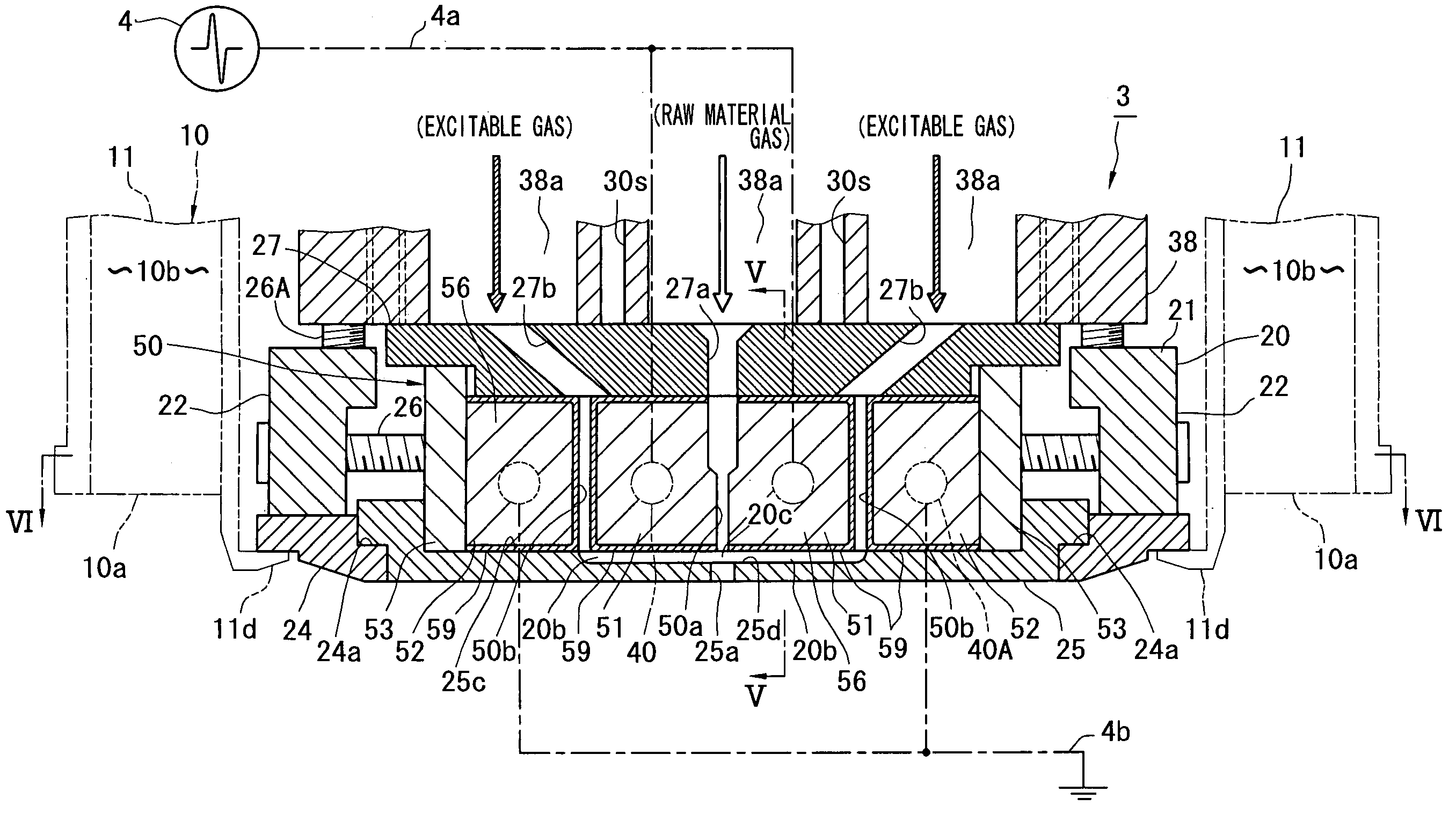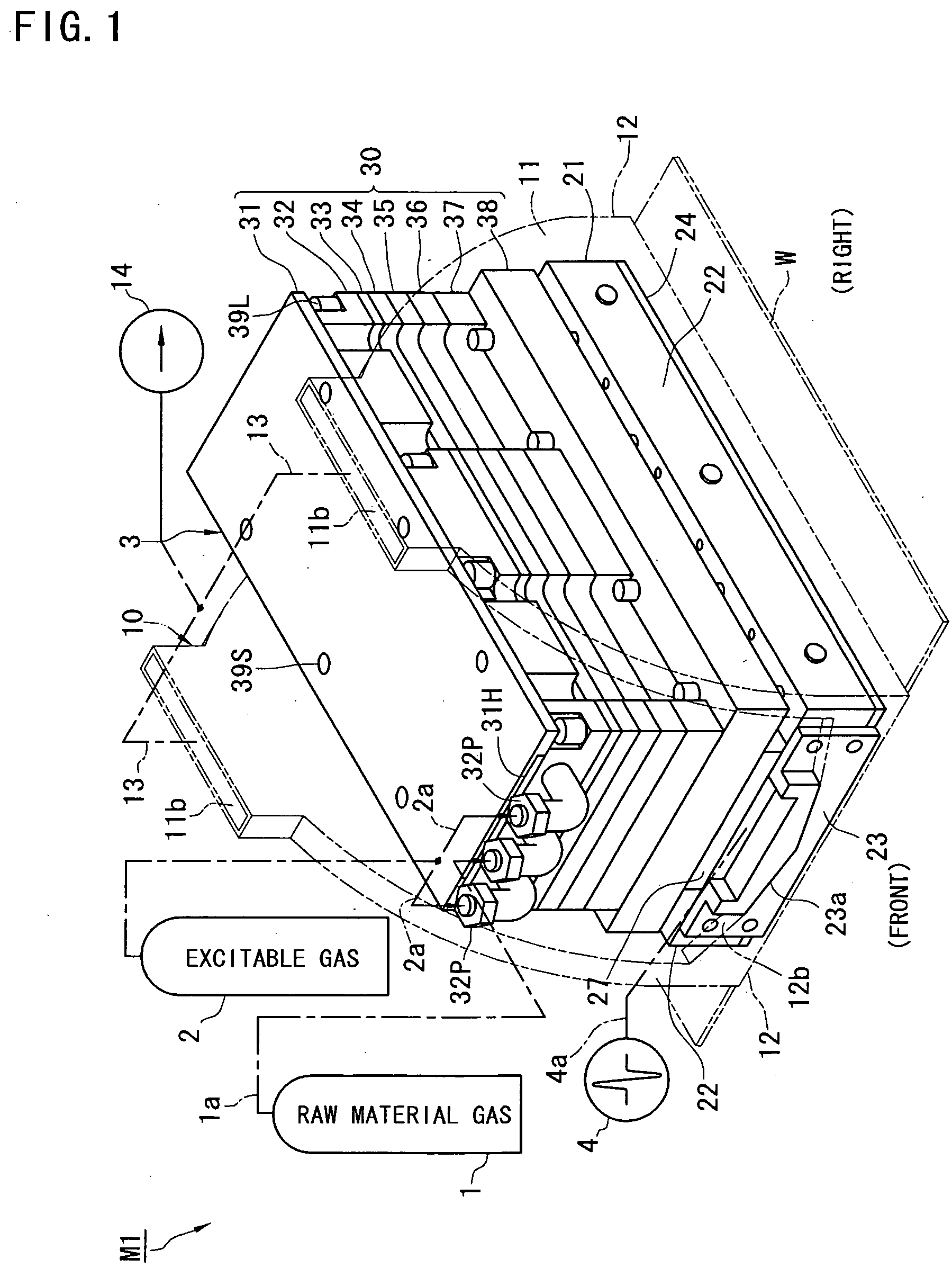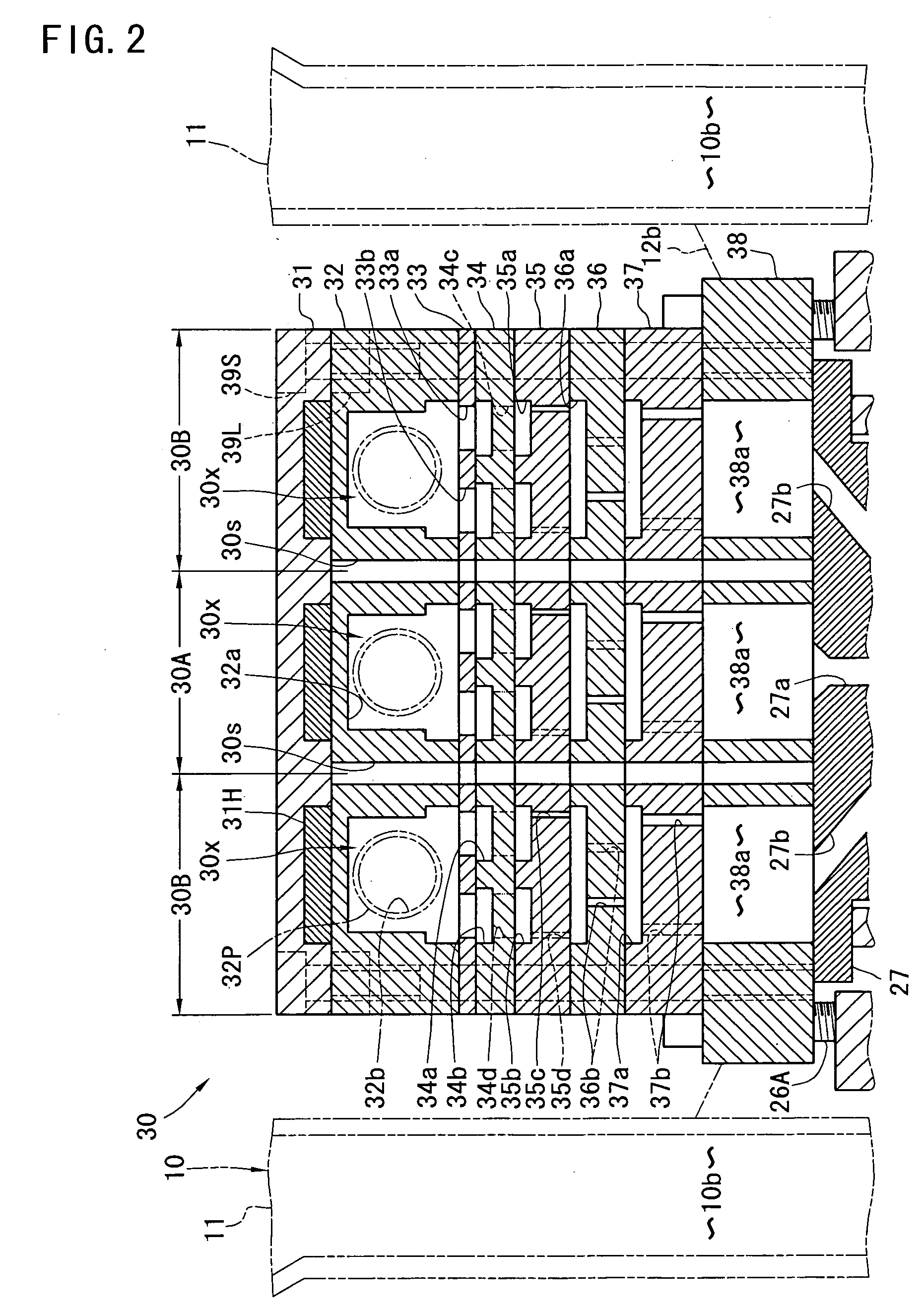Plasma film forming system
a technology of plasma film and forming system, which is applied in the direction of coatings, chemical vapor deposition coatings, electric discharge tubes, etc., can solve the problems of increasing the number of parts, affecting the quality of plasma film, so as to reduce the frequency of maintenance and reduce the number of parts. , the effect of high quality film formation
- Summary
- Abstract
- Description
- Claims
- Application Information
AI Technical Summary
Benefits of technology
Problems solved by technology
Method used
Image
Examples
first embodiment
[0126]FIG. 1 shows a normal pressure plasma film forming apparatus M1 according to the present invention. The normal pressure plasma film forming apparatus M1 comprises a frame (support means) including a housing 10, a processing head 3 supported on the housing 10 of the frame, two kinds of processing gas sources 1, 2 connected to the processing head 3, and a power source 4. Beneath the processing head 3, a plate-like base material W (material to be processed) having a large area is transferred in the left and right direction by transfer means (not shown) It is, of course, accepted that the base material W is fixed and the processing head 3 is moved. In the normal pressure plasma film forming apparatus M1, a film A (FIG. 8) such as, for example, amorphous silicon (a-Si) and silicon nitride is formed on an upper surface of this base material W.
[0127] Of the two kinds of processing gas sources, a raw material gas source 1 (first gas source) stores therein a raw material gas (first gas...
third embodiment
[0198]FIG. 13 shows the present invention.
[0199] In the third embodiment, an electrode group consisting of eight (a plurality of) planar electrodes 51, 52 is disposed within a metal conductor-made nozzle body 20B of a processing head 3. Those electrodes are in mutually parallel relation and arranged at equal intervals in the order of the ground electrode 52, the electric field impressing electrode 51, the ground electrode 52, the ground electrode 52, the electric field impressing electrode 51, the electric field impressing electrode 51 and the ground electrode 52 from left. Owing to this arrangement, the second flow passages (plasma discharge space) 50b between the electrodes having different polarities and the first flow passages 50a between the electrodes having the same polarities are alternately arranged. Each first flow passage 50a allows the raw material gas (first gas) from a raw material gas source (not shown) to pass therethrough, and each second flow passage 50b allows the...
fourth embodiment
[0206]FIGS. 15 through 20 show the present invention.
[0207] In the fourth embodiment, as in the first embodiment, second flow passages are arranged on the left and right sides with a central first flow passage sandwiched therebetween. Those three flow passages are converged and continuous with a single common blowoff passage 25a. The fourth embodiment is different from the first embodiment in respect of the arrangement position of the ground electrode and the location of the plasma discharge part of the second flow passage.
[0208] More specifically, as shown in FIGS. 15 and 17, in the processing head 3 of the fourth embodiment, dummy electrode spacers 52S instead of the ground electrodes 52 of the first embodiment are disposed at the locations for receiving the ground electrodes 52 of the first embodiment (FIGS. 3 and 6). The dummy electrode spacers 52S each have a substantially same configuration as the ground electrodes 52 of the first embodiment, but they are composed of an insul...
PUM
| Property | Measurement | Unit |
|---|---|---|
| pressure | aaaaa | aaaaa |
| frequency | aaaaa | aaaaa |
| electric field strength | aaaaa | aaaaa |
Abstract
Description
Claims
Application Information
 Login to View More
Login to View More - R&D
- Intellectual Property
- Life Sciences
- Materials
- Tech Scout
- Unparalleled Data Quality
- Higher Quality Content
- 60% Fewer Hallucinations
Browse by: Latest US Patents, China's latest patents, Technical Efficacy Thesaurus, Application Domain, Technology Topic, Popular Technical Reports.
© 2025 PatSnap. All rights reserved.Legal|Privacy policy|Modern Slavery Act Transparency Statement|Sitemap|About US| Contact US: help@patsnap.com



